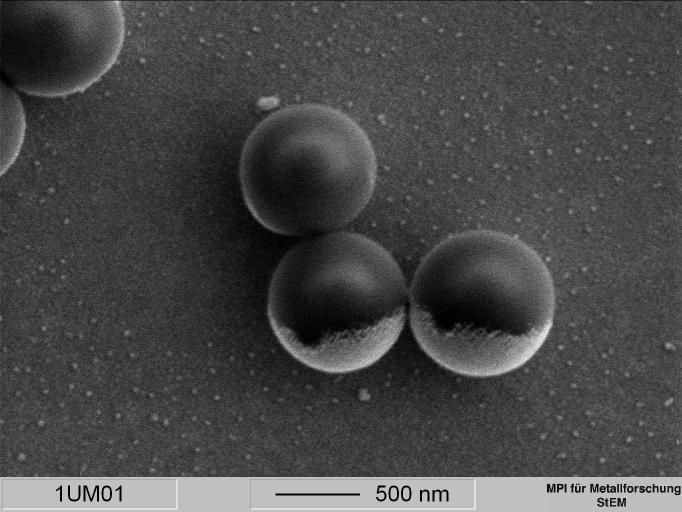
Janus particles propelled by local demixing
Differently from simple Brownian motion, which is dominated by random fluctuations, active Brownian particles feature an interplay between random fluctuations and active swimming. A paradigmatic example of active Brownian motion is the swimming behavior of bacteria such as Escherichia Coli. Its strategy to look for nutrients can be described as a sequence of roughly straight trajectories, “runs” and waiting times, “tumbles”. The presence of a nutrient gradient can influence the frequency of such tumbles and, thus, the bacterial motion can adapt to the ambiental conditions; furthermore, different behaviours may be observed under the same environmental conditions depending on the bacterial phenotype. Also artificial particles can perform active Brownian motion, provided that the symmetry of the suspension be broken towards a far from equilibrium status. This can be achieved by a periodic deformation of the Brownian swimmer. It can be also be achieved using asymmetric particles, e.g., Janus particles or microrods, immersed in an external gradient, e.g., a magnetic field gradient.

One of the main advantages of this new species of active Brownian particles is that the active Brownian motion can be tuned by the illumination power. In the figure below one can see that the directed segments of the trajectories increase with increasing illumination. Thanks to this property, we can study for example the behaviour of active Brownian particles in a porous medium, which, for example, alters the statistical properties of the trajectories, e.g. their mean square displacement. Similar concepts can prove useful also in the study of biological active Brownian particles, e.g., E. coli.

| Microswimmers in Patterned Environments |
| Giovanni Volpe, Ivo Buttinoni, Dominik Vogt, Hans-Jürgen Kümmerer, and Clemens Bechinger Soft Matter 7, 8810 - 8815 (2011) |
